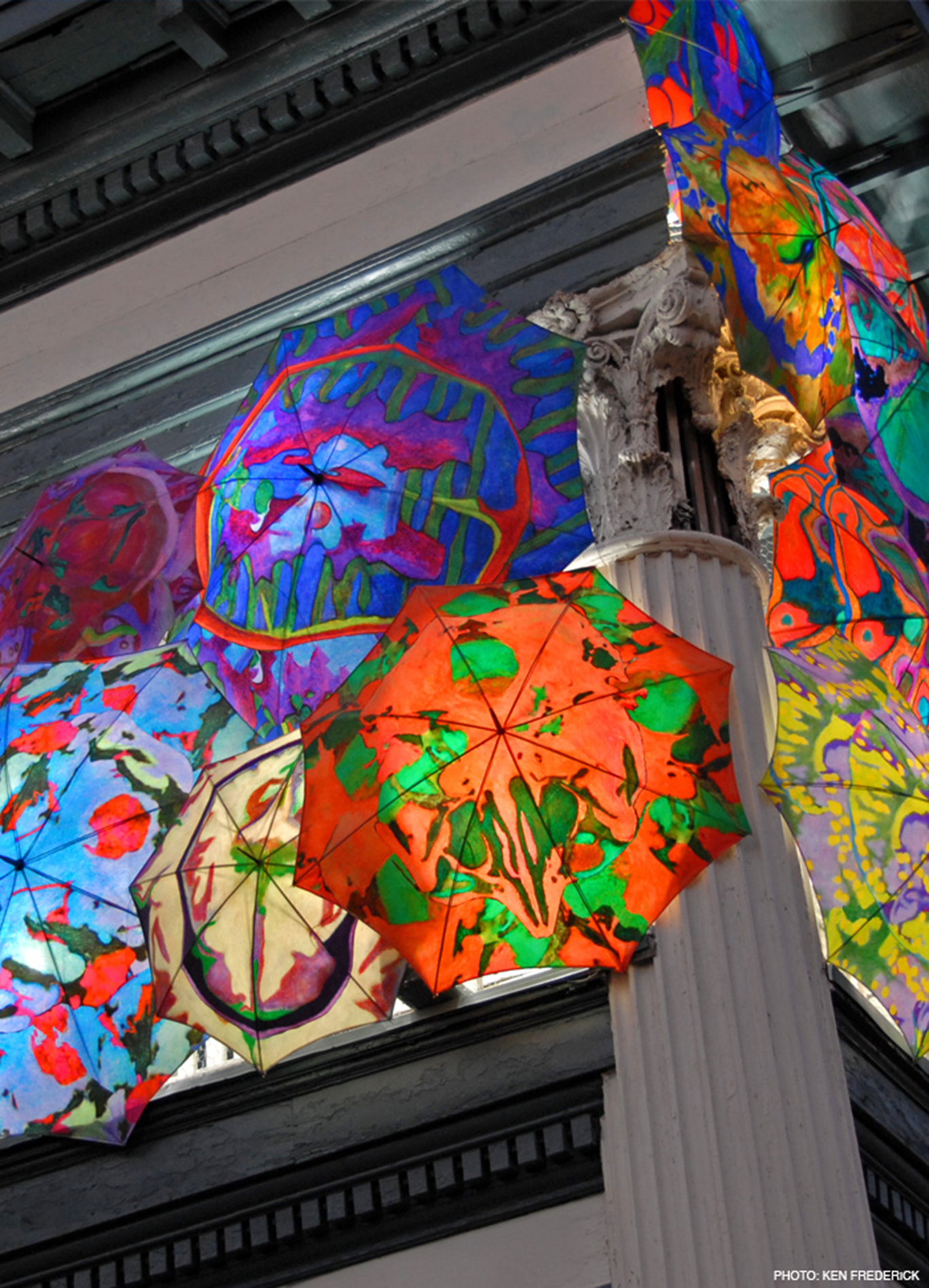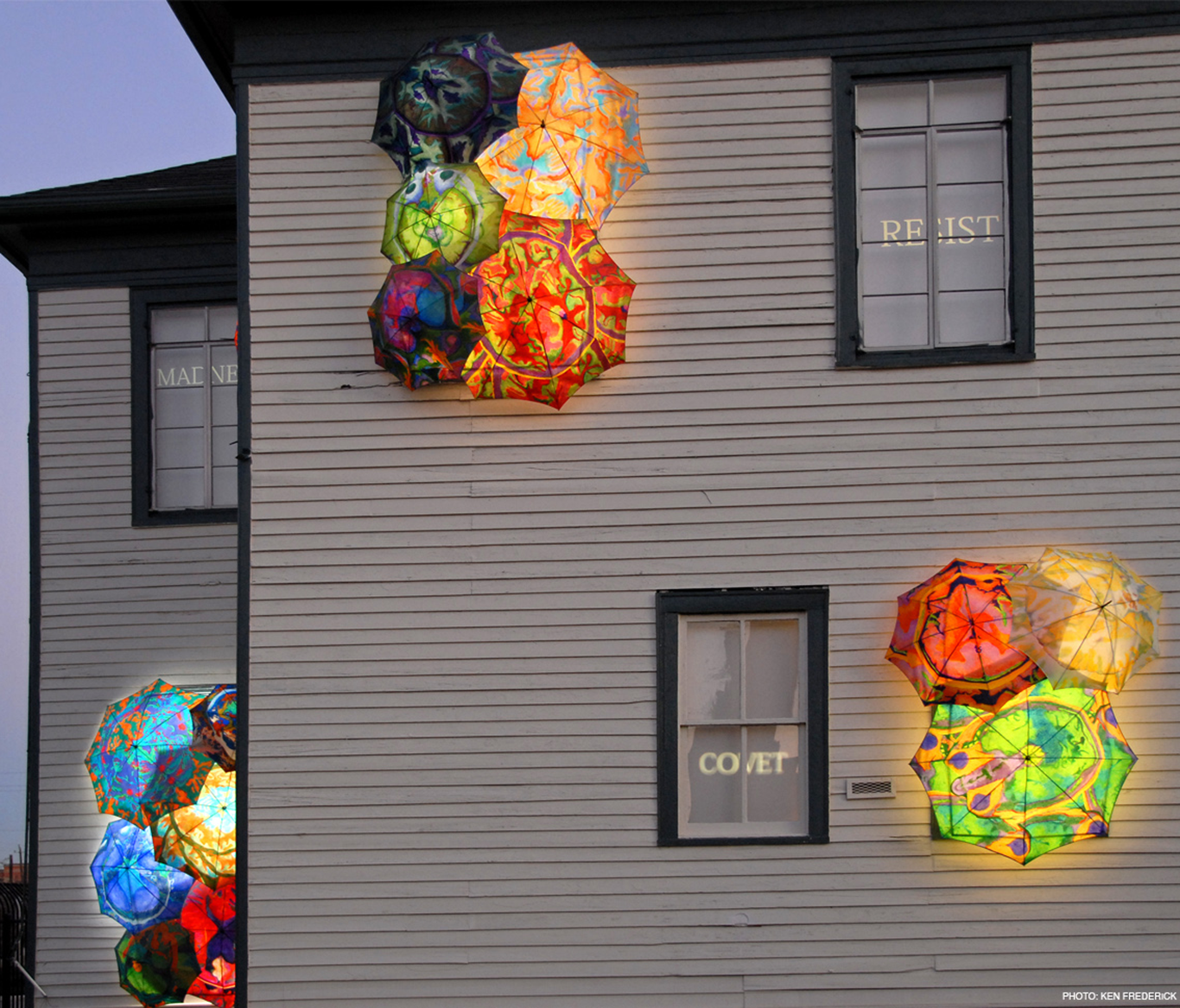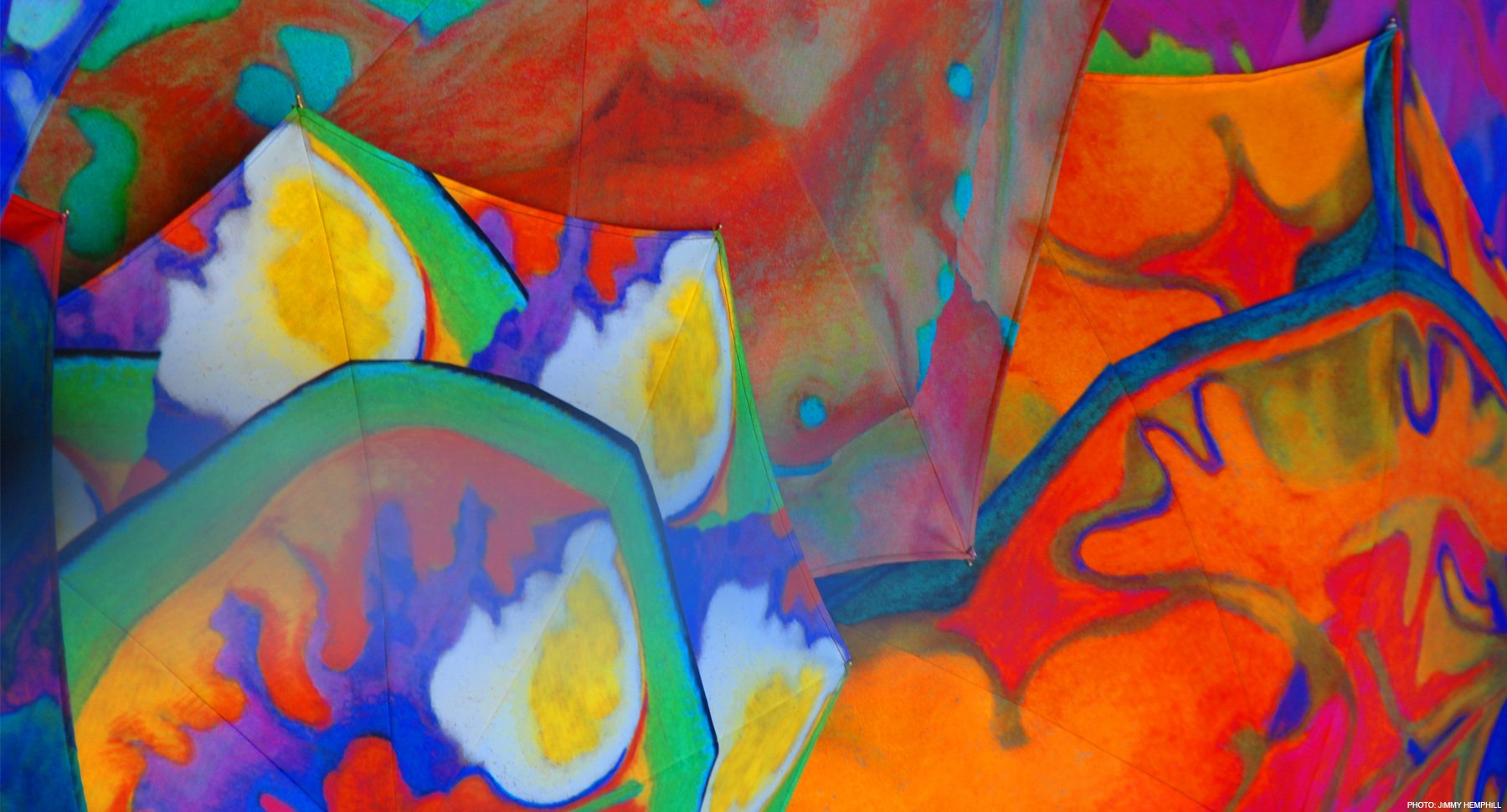PARASOL PROJECT
Historical Foley House, Houston, Texas
2006
"A lighted lamp in the window
watches in the secret heart of night."
- The Poetics of Space, Gaston Bachelard
-
this patterned floor of oak and cherry, this Butler's Pantry where once upon a time china plates were placed, and this elegant stairway which led to a family's private sanctuaries; they have heard the whispers of sisters, the rapturous daydreams that are residents of solitude and silence. Yet, these walls have echoed the symphonic tones of Mahler, Debussy and Chopin, and the mellifluous voices of two daughters schooled in Paris. These walls, these floors, have heard laughter, and as counterpoint, the lonely sounds of a son gone to war. This vapor house, of mysteries and reveries, inflamed my imagination and curiosity. We will never know the intimacies of this family's house, but I can run up the stairs, sit on the balcony, gaze, and wonder...
From library stacks to convent archives, from church rectories to cemetery headstones, I found records, family papers, and books. As I read, I heard the rustle of satin as a woman walked down Main Street in 1904 Houston. I felt the breeze through screens of a house without modern cooling; I felt the erubescence of fever.
I read Wills, Deeds, and biographies. I found receipts for Ball gowns, Tea gowns, and Parasols. I came across a mansion of words that possibly could have been the vocabulary that built this home.
This house, this home, became the physical armature of my psychological exploration into the poetics of space. Private. Public. Exposure. Written History. Recollected memories. Repossessed. I breathe a conversation from the walls...
"Victorians" embraced the idea of propriety and high moral standards. "Family values" and "good upbringing" were foremost in people's minds and verbal exchange of emotions was bridled. The Industrial Revolution was fast and furious - Edison's incandescent light was replacing the kerosene lamp, cars were beginning to share the road with horse drawn carriages, the Pocket Kodak was freezing a moment at a fraction of the time of a daguerreotype, the Wright Brothers were flying planes in North Carolina, Houston was building its first "skyscrapers", and cholera was introduced to America. One million immigrants a year from Italy, Russia, Northern and Eastern Europe were coming to the United States through ports such as Ellis Island and Galveston. The oil industry was making Houston a destination of opportunity, wealth and prosperity. Elite society tired of the city metropolis yearned for the green country landscape and its pastoral sensibilities. Gardens and gardening expressed wealth and stature as well as a way to return to nature.
The repression of expression during Queen Victoria's reign kept secluded one's coveted soul. Under the public's scrutinizing gaze, courtship had strict rules of socially appropriate behavior. A secret communique was needed, a discreet language for lovers. An unspoken dialogue was created using flowers and their symbology. By handing a beloved a bouquet of forget-me-nots, purple lilacs, white roses and pine - the message was conveyed, "Do not forget our daring first emotions of love, but be silent" and in returning white clover, the response was "I promise". The parasol, as well, was an extension of a Victorian woman's dress, a beautiful feminine object utilized to express one's private sensibilities. A shaded face or a demur glance behind one's parasol could infer disinterest or whisper excitement.
Intimacy in the 21st century is dramatically different. Pillow books and secret journals are no longer an essential part of a young girl's self-discovery of womanhood. Cyberspace has taken the place of intimate conversations. The beauty of our bodies and brains are scanned, x-rayed, studied and analyzed. What is seen on a neuroimage is a vast sea of information. What are we looking at? What are we seeing? Tumors and illness? Injuries and congenital blips in the DNA? Where is anger? Where is lust? Where is compassion on that state of the art scientific image of the brain? You have to know the language...
The project became PARASOLS. I colored Black and White MRI images of brains with colored pencils, manipulated the images, transferred and digitally printed them on satin fabric. Looking, shading and shaping, I found the brain scans floral. Gardenlike. Hidden emotions expressed through flower exchange. An exposed brain that had floral qualities.
The esoteric language of propriety, society, medicine, psychology, and solitude, was selected from an 1890 Webster's Dictionary, tracked and purchased on e-bay. Projected onto the windows, the words peek out at the world, like stolen glimpses from behind a curtain. From his room, from her room, from the drawing room; the categorized words and phrases, like faces, change with each advance of the slide projector. The blinking lexicon reverses the gaze, offering a brief glance into the complex emotions of a family in their private nest. Additionally, I incorporated music and sound into the project through an original score and sound design by Houston composer, Brad Sayles, written specifically for this installation.
In addition to the Individual Artist's Grant awarded through Houston Arts Alliance, I sought and received additional funding for the project through Houston Endowment, City of Houston's City Initiative Program through Houston Arts Alliance, Houston Downtown Improvement, Inc., and City of Houston's Convention and Entertainment Facilities Department.
-Jo Ann Fleischhauer 2006
PHOTOS BY KEN FREDERICK & JIMMY HEMPHILL
PHOTOS BY JANICE RUBIN









